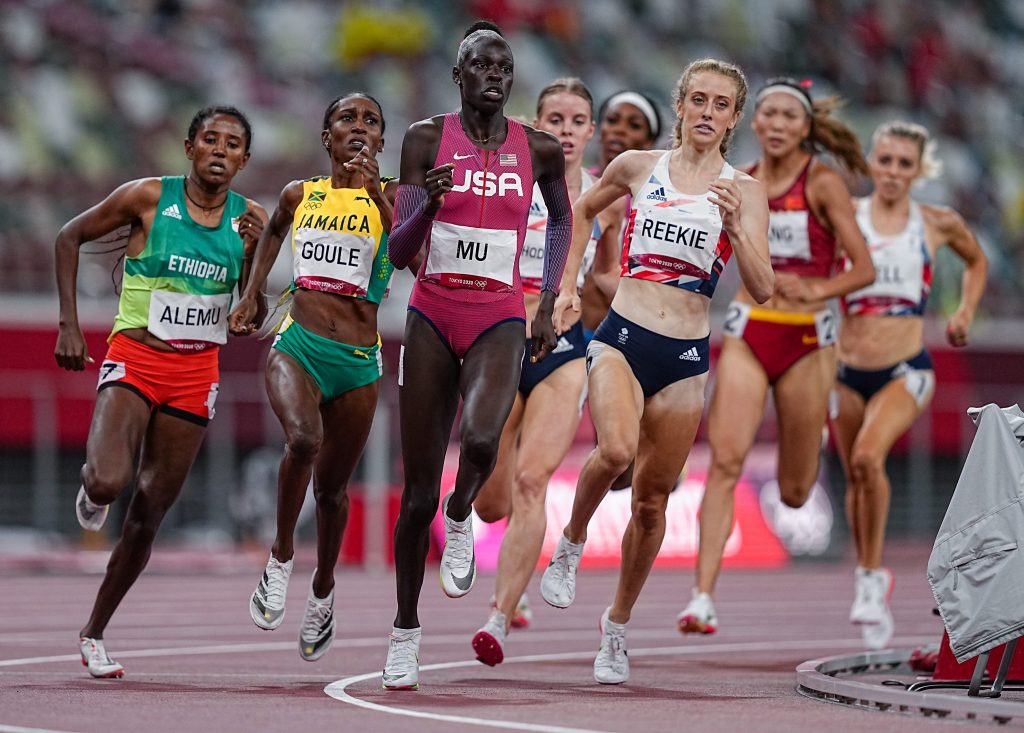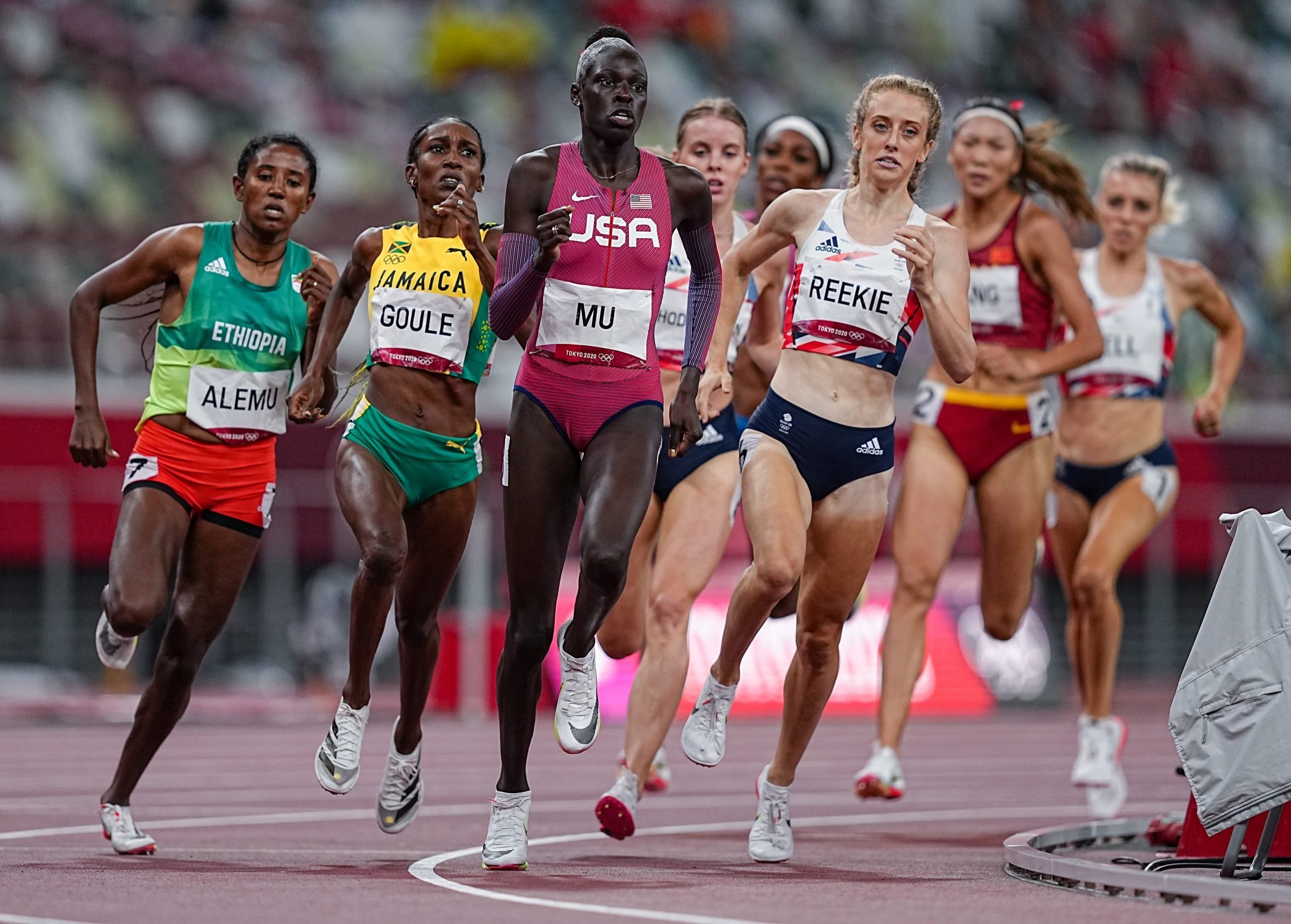
Michael Kappeler/dpa/Getty
- Nike has led the way in creating "super spikes" – track shoes that help athletes run faster.
- Many brands have their own super spikes, but Nike runners took most podium spots at the Olympics.
- Athletes wearing Nike's Vaporfly shoes also dominated in the Olympic marathon.
- See more stories on Insider's business page.
With the Olympics over, countries are boasting about their total medal counts. In Tokyo, the US came out on top. But in track and field, a closer examination of who stood on the podium reveals a different winner: not a country, but a brand.
Athletes wearing Nike shoes took 21 of 33 podium spots – about 64% – in Tokyo's individual track events, including hurdles, steeplechase, and the marathon.
It's evidence that the company's "super shoes" may indeed be superior. Their design surrounds plates made of carbon fiber or stiff plastic in a pliable foam cushion that gives energy back to the runner with each footfall.
Nike debuted its super shoe concept at the 2016 Olympics in Rio: Athletes wearing Nike Vaporflys dominated the marathon, as well as every major long-distance road race thereafter. Studies have shown that the Vaporfly's combination of carbon fiber and foam confers about 4% more energetic efficiency, allowing athletes to shave minutes off their marathon times.
Then in preparation for Tokyo, Nike pioneered "super spikes" in 2019 – a shoe for the track that capitalizes on the design that made Vaporflys successful.
The move forced companies like Adidas, Puma, New Balance, and Brooks to quickly design their own super spikes, using similar combinations of stiff plates and foam.
"Everybody is trying to emulate Nike's spikes because they are so legit," Geoff Burns, a sport performance researcher at the University of Michigan, told Insider. "They're pared down versions of the Vaporfly with the same basic recipe."
What are super spikes?

Berengui/DeFodi Images/Getty
In the past, spikes were designed simply to protect the bottom of a runner's feet and give traction (spikes, in this case, refers to shoes, not the tiny pointed pieces of metal of the same name). Very little foam was involved because every 100 grams of foam meant about a 1% loss in energetic efficiency. That cushion wasn't worth the added weight, especially for short distances.
Then came new foam formulations like Nike's ZoomX, which uses polyether block amide, or Pebax. Pebax foam is remarkably lightweight and resilient. After ZoomX foam gets squished, it bounces back to its original shape, returning 85% of the energy that the runner used to compress the foam.

Courtesy of Nike
That foam, coupled with stiff plates that help sprinters run on their toes, can make for faster race times. Of the 11 men's individual track events in Tokyo, Nike swept the podium in three. Same on the women's side. Three Nike runners broke Olympic records.
The results weren't altogether unexpected. After Nike released its first super-spike prototypes, runners using the shoes have broken records in the 1,500-meter, 5,000-meter, and 10,000-meter events, Outside Online reported.
Although other brands now utilize similar designs, some athletes are still concerned that Nike shoes confer an unfair advantage.
'We're just smarter about how we engineer and assemble them'
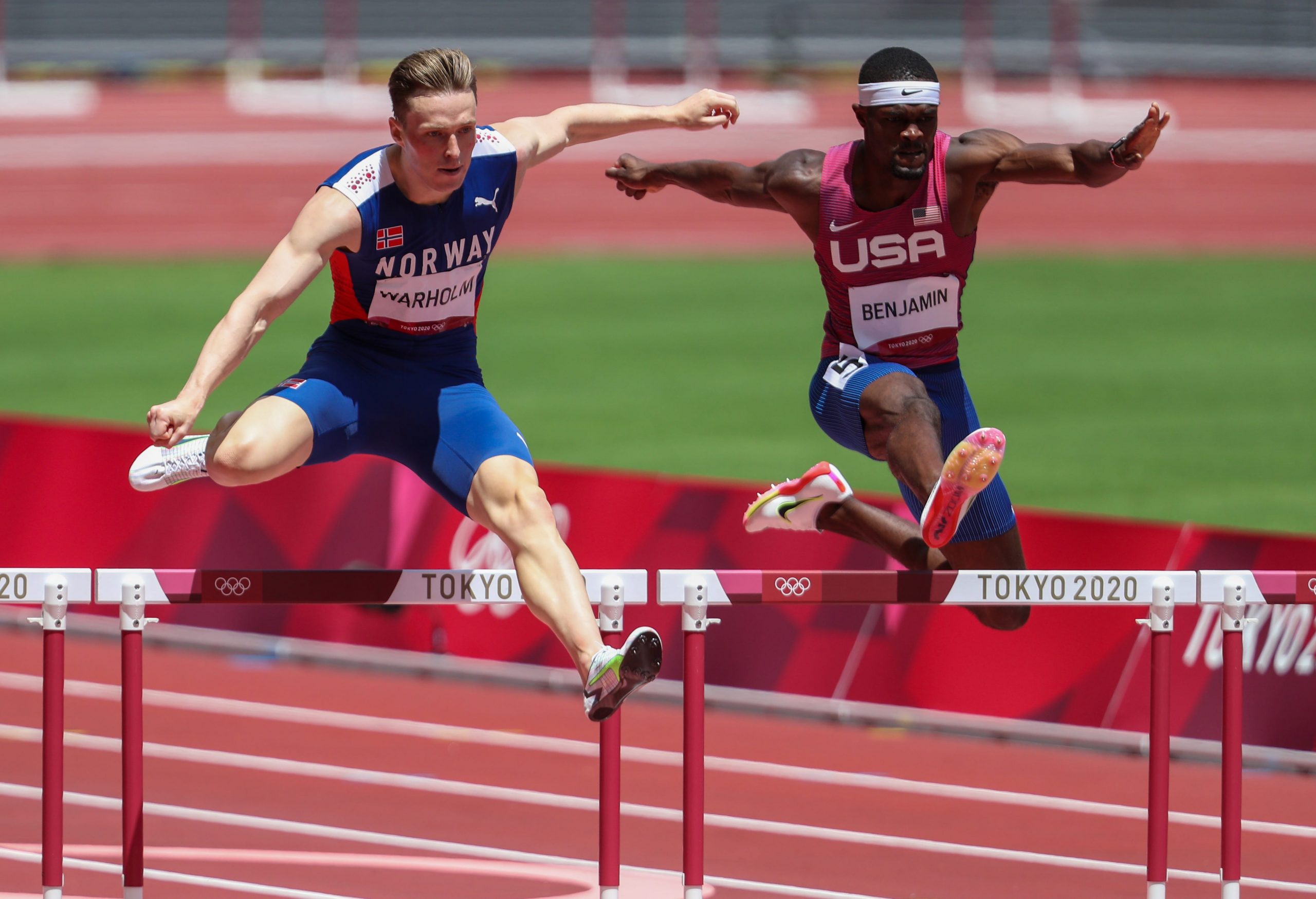
Roger Sedres/Gallo Images
After Norwegian sprinter Karsten Warholm won the men's 400-meter hurdle event in Tokyo last week, he criticized his US opponent Rai Benjamin - who placed second - for wearing Nike Air Zoom Maxfly super spikes. The shoes have a feature Nike calls a "Zoom Air unit": a springy, pliable cushion under the forefoot that helps runners conserve more energy per footfall.
Warholm, who is sponsored by Puma, called the technology "bulls---," comparing the soles to trampolines and saying the shoes take credibility away from the sport.
According to Laura Healey, a researcher in Puma's footwear innovation department, Warholm's Puma super spike has a carbon-fiber plate similar to Nike's. But she previously told Insider that Nike's air unit does have "a higher energy return than foams, and Nike has patented this tech."
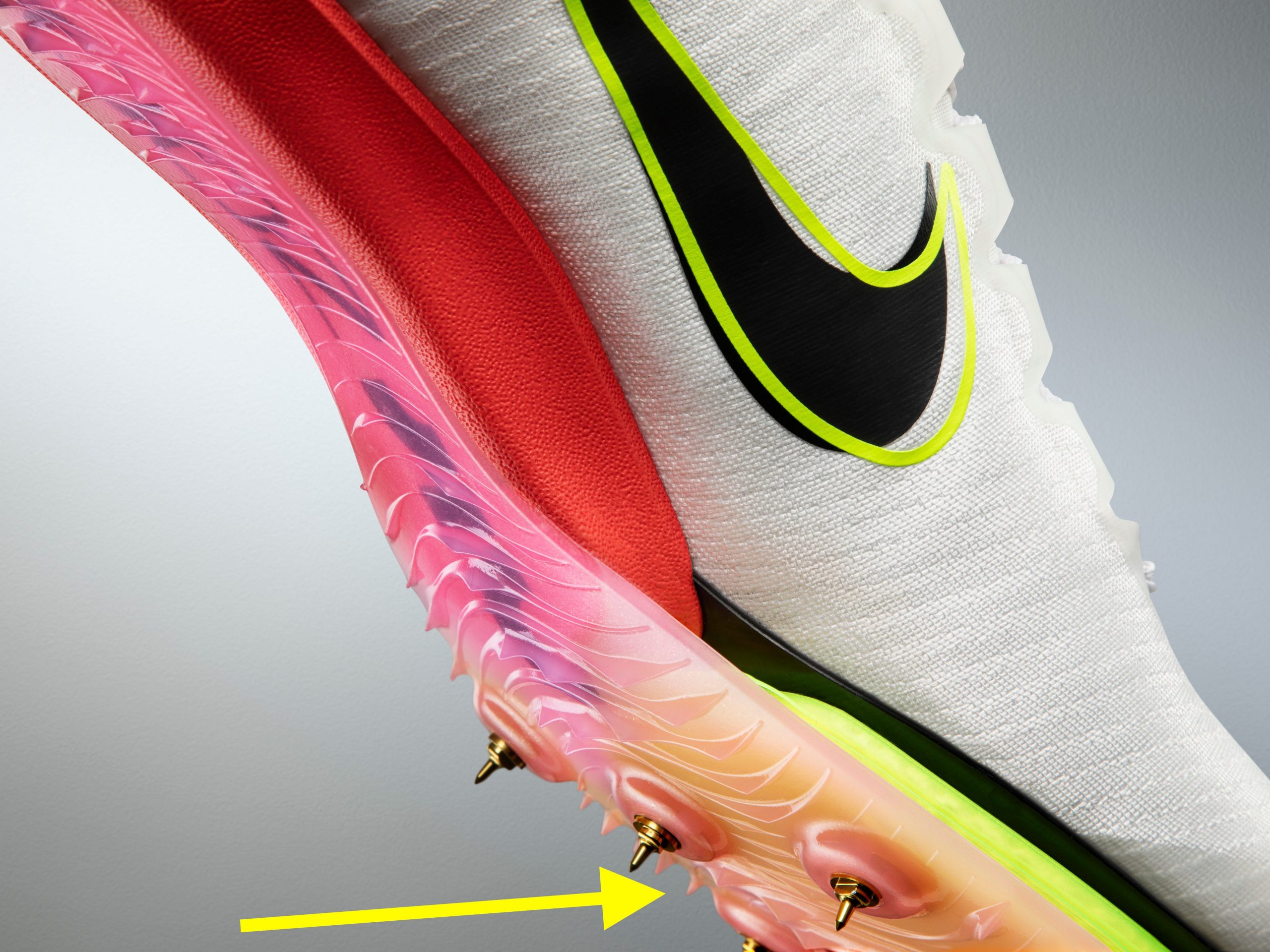
Courtesy of Nike
Nike, meanwhile, likes to point out that the same three components - carbon fiber, foam, and air - have been used in running shoes for decades, both Nike's and others.
"We're just smarter about how we engineer and assemble them," the company said.
Burns estimated that Nike's super spikes might confer about an energy advantage of 1.5% to 2%. But none of the shoes worn at the Tokyo Games violated any rules, according to guidelines from World Athletics, the international governing body of track and field.
Nike's potential advantage may matter less in short sprints
Experts think differences in super-spike technology probably matter less in short races, since energetic efficiency is less of a factor when a race is over in under a minute.
"Sprinting is constrained by absolute power output," Burns said.

Li Ming/Xinhua via Getty Images
That reality was borne out in Tokyo. In the men's 110-meter hurdle race, runners wearing Puma and Adidas took the top two spots. The men's and women's 400-meter winners wore Adidas, and the men's 200-meter winner wore Pumas. When US sprinter Sydney McLaughlin broke the 400-meter hurdle world record, she was wearing New Balance.
By contrast, Burns said, "it's absolutely enormously beneficial to be in those super spikes" for longer distance events.
Indeed, Nike took five out of the six podium spots in both the men's and women's 800-meter and 1,500-meter races.
Vaporfly tech continues to dominate
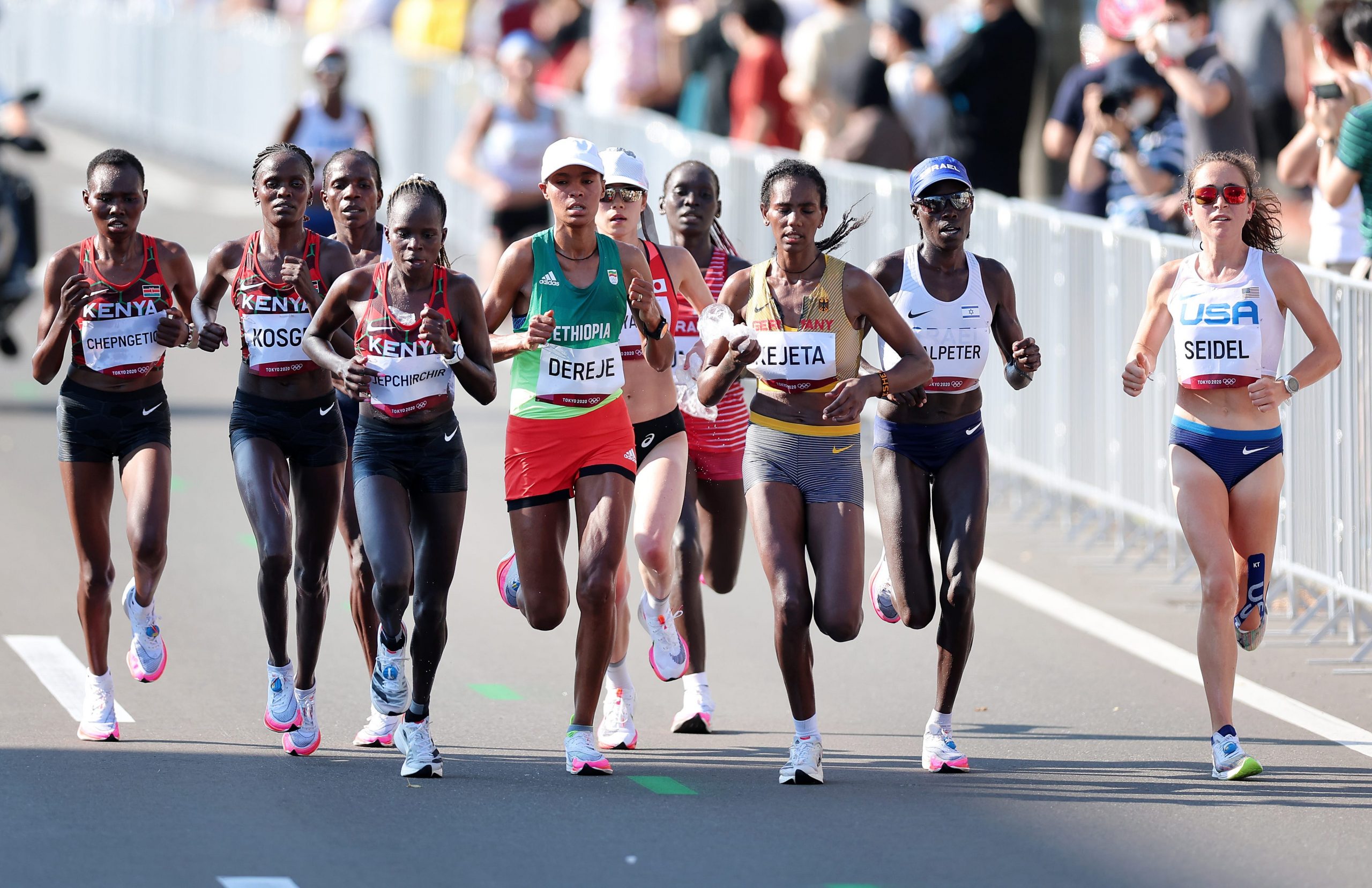
Lintao Zhang/Getty
Nike Vaporflys - easily noticeable due to their white and pink coloring - also dominated the Olympic marathon once again. Athletes wearing them took four of the six podium spots for men and women.
Kenyan marathoner Eliud Kipchoge, who ran the first sub-two-hour marathon in 2019, took gold wearing the newest Vaporfly iteration, called the Next% 2. Nike runner Brigid Kosgei, who broke the women's marathon record in Chicago in 2019, came in second.
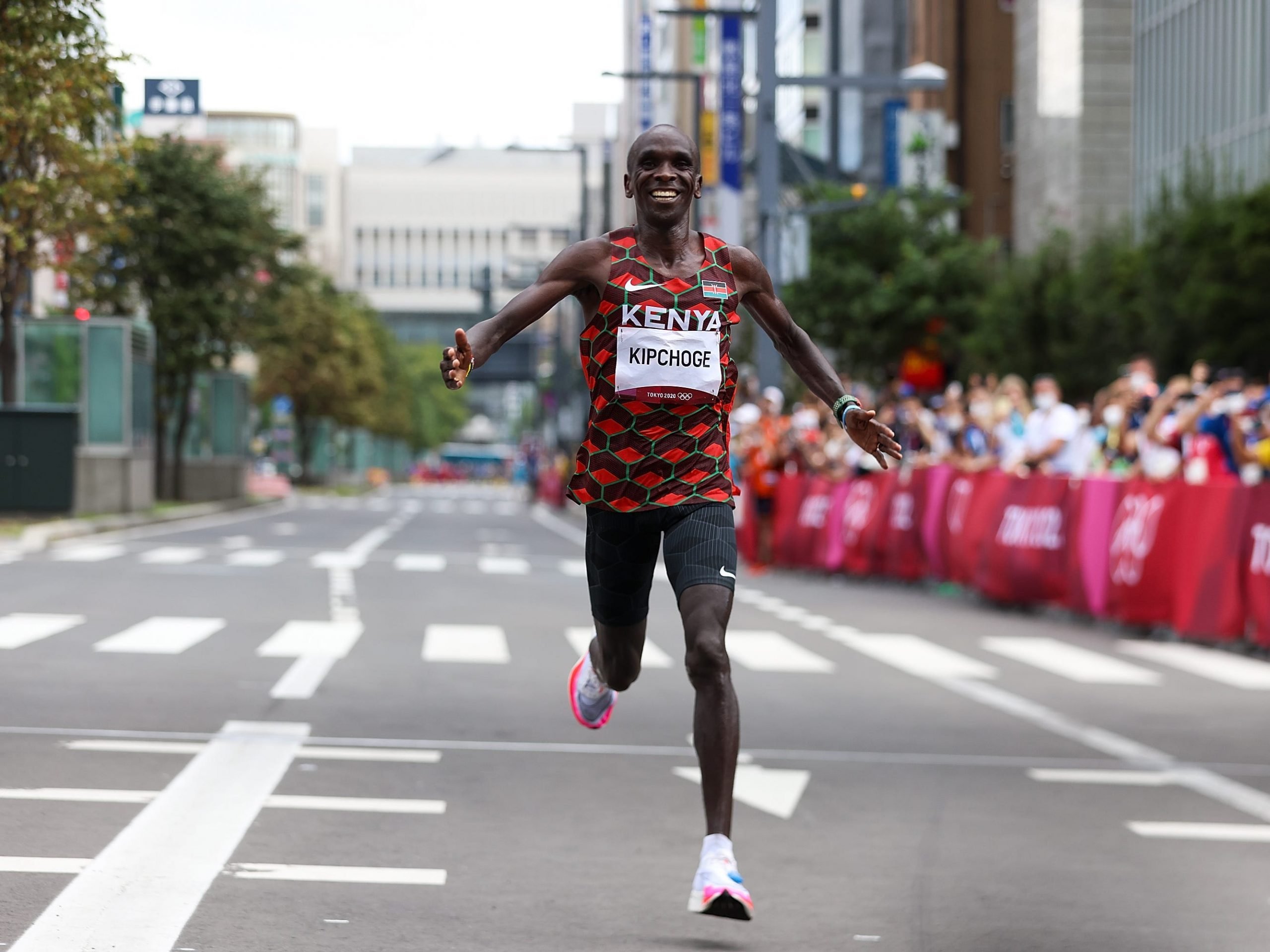
Lintao Zhang/Getty
Nike, however, says runners' achievements are never about the shoe alone.
"Time and again, we've proven in our labs that Nike racing shoes and spikes provide measurable benefits - but ultimately, it's the athletes on the track and on the roads who validate our work," the company said.
That's true, Burns previously told Insider: "The runner runs the race," he said, "but the shoe enables him or her to run it faster for the same effort or ability."
Dit artikel is oorspronkelijk verschenen op z24.nl
